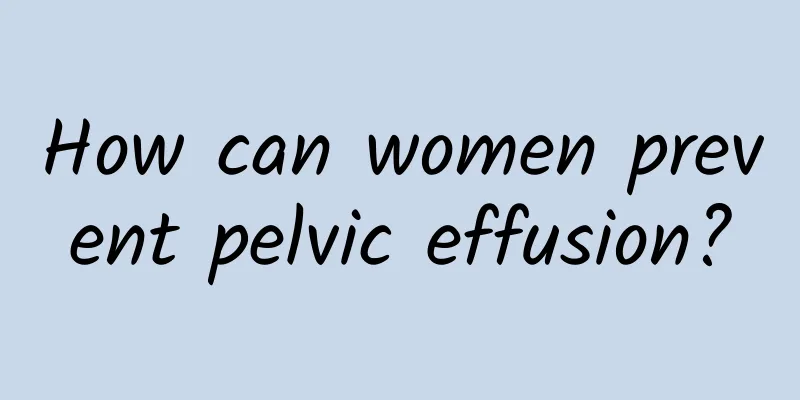How much do you know about the precautions after an abortion?

|
What are the precautions after artificial abortion? How much do you know about the precautions after artificial abortion? Painless abortion uses a new type of safe and effective intravenous general anesthetic. So what are the precautions after artificial abortion? In response to this question, let the experts introduce the precautions after artificial abortion to us in detail. Things to note after an abortion: Uterine perforation is extremely rare. If the surgeon pays attention to it and operates carefully and gently, it can be avoided. If it is only uterine perforation without intra-abdominal bleeding, the patient can be hospitalized for observation. Otherwise, the perforation should be sutured immediately. This is the precaution after artificial abortion. Infection is obviously a precaution after artificial abortion. If there is uncontrolled genital inflammation before the operation, or if the aseptic operation is not strictly performed during the operation, it may cause pelvic infection, and anti-infection treatment should be carried out immediately. Things to note after an artificial abortion: Menstrual disorders Within 3 to 6 months after surgery, the menstrual volume may increase and the menstruation may be irregular, but it can usually recover naturally. Uterine bleeding: The amount of bleeding during surgery is usually less than 30ml. If the amount of bleeding is large, in addition to giving uterine contraction drugs, the residual embryonic tissue in the uterine cavity should be quickly removed. Bleeding generally lasts 3 to 4 days after abortion. If the bleeding is similar to menstrual flow and continues, it may be an incomplete abortion or a combined infection, and you should go to the hospital for examination. If the embryonic tissue is not completely removed during the residual pregnancy tissue surgery, it may cause bleeding and lower abdominal pain. Chinese medicine and uterine contraction drugs can be used to promote its expulsion, or even another curettage to clean the uterine cavity. Intrauterine adhesions occur occasionally. They are usually caused by damage to the cervix and uterine cavity during surgery. They can block the discharge of menstrual blood, causing amenorrhea, cyclical abdominal pain, long-term infertility or repeated miscarriage. The main treatment method is to dilate the cervix and separate the adhesions before placing an intrauterine contraceptive device to prevent the recurrence of intrauterine adhesions. This is also a precaution after artificial abortion. What are the precautions after artificial abortion? The above is a detailed introduction of the precautions after artificial abortion by experts. I hope it can help you. If you have more questions about artificial abortion, you can click on our related website for consultation. Finally, I wish you good health. Abortion http://www..com.cn/fuke/yc/rl/ |
<<: What kind of people are not suitable for abortion?
>>: Do you know the symptoms of an enlarged cervix?
Recommend
What are the dangers of pelvic inflammatory disease?
Pelvic inflammatory disease is a gynecological di...
What are the dangers of cervical warts
Are cervical warts harmful to patients? This is a...
Obesity is the culprit of polycystic ovary disease and can easily lead to infertility! Dr. Pan Junheng: Eat less of these high-cholesterol foods
Women with polycystic ovary syndrome often have p...
Experts explain what to pay attention to after painless abortion
Many female friends may be familiar with painless...
What are the clinical manifestations of cervicitis?
Cervicitis is a common gynecological disease, and...
How long does it take to treat vaginal candidiasis?
Many women who suffer from candidal vaginitis are...
Get rid of the title of elephant leg! Try 3 Lower Body Sculpting Exercises
【Sports Guide】 It is suitable for apple-shaped, b...
What are the common causes of uterine fibroids?
"What are the causes of uterine fibroids?&qu...
How much does an abortion cost?
Nowadays, many young people do not take contracep...
How to regulate scanty menstruation
Light menstrual flow can be a problem for many wo...
Do you know what menopausal hot flashes are?
Menopause is a physiological process that women m...
Introduction to the Immature Uterus
Infantile uterus, also known as uterine hypoplasi...
Experts talk about several measures to prevent uterine fibroids
Uterine fibroids are common gynecological tumors,...
Preventive measures for vulvar leukoplakia in daily life
Among gynecological diseases, vulvar leukoplakia ...
What are the dangers of pelvic peritonitis to women?
Pelvic peritonitis causes obvious symptoms in pat...









